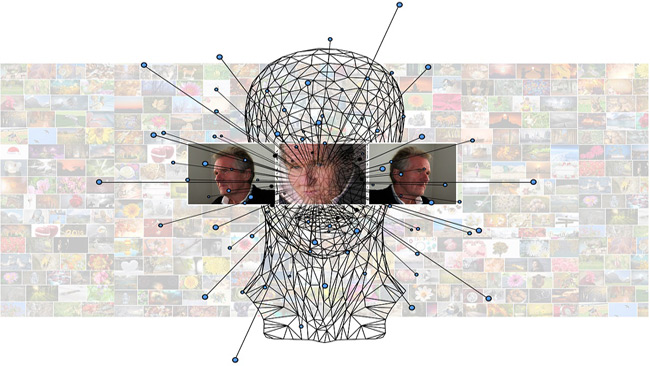The Terminator movie series made it clear that robots would take over our world one day and the massive emergence of technology is bringing about a disruption in the media and entertainment industry. Today we are going to take a look at Deepfake technology and how it is imparting a facelift to the media ecosystem.
What Is Deepfake Technology
Deepfake is an AI-based media synthesizing technique that includes manipulating sounds and superimposing human features on another person’s face/body to render a real human experience. Deep learning technology is used by the Deepfake app to imitate a person’s actions, looks, and mannerisms without requiring them to be present. This results in hyper-realistic audio and video which is impossible to distinguish from the real thing. While there are various ways of creating Deepfakes, using autoencoders that bank on face-swapping technology is the most popular one. An autoencoder uses deep learning to scan video clips of a person from various angles and in various environments to map it onto the resulting video by finding similar traits between the two.
You can take the example of actor Val Kilmer who lost his voice in 2015 to throat cancer but Sonatic’s deepfake technology helped the distinguished actor to speak thus bringing his son to tears who couldn’t control his emotions on hearing his father speak again. The use of deepfakes also had a significant role to play in breaking down language barriers including the Malaria No More campaign by David Beckham in which the soccer star delivered his message in nine separate languages.
Deepfake In Entertainment Industry
If you have watched the movie Gemini Man, then you must have marveled at an eighteen-year-old version of Will Smith portrayed in the movie. Well, it’s not a body double or the magic of makeup, rather it is Deepfake technology that banks on artificial intelligence and machine learning to generate audio and visual content with a high deceiving potential.
One of the most notable uses of deep fake technology was in Martin Scorsese’s 2019 movie The Irishman which made actor Robert De Niro appear thirty years younger. Shortly after the release of the movie, a deepfake video by YouTube user Shamook took the internet by storm by challenging the de-aging effects of the original movie. The new Deepfake levied greater importance to the detailing aspects of Robert De Niro’s younger self.
Various legendary actors are now being regenerated after their death. While this practice is controversial and has attracted hate comments from the entertainment industry, it has already happened in the Star Wars movie franchise. Actor James Dean died in 1955 but movie producers are planning on bringing him back to the silver screen with a movie titled Finding Jack which is adapted from Gareth Crocker’s novel.
The film story is set in a war-stricken Vietnam and follows the journey of a group of soldiers who refuse to leave behind their four-legged companions of pokemon rom hacks. Dean will supposedly play the second lead in the film and his character will be crafted using Dean’s footage and photographs captured from old movies. The very idea of bringing back a deceased star through computer manipulation of graphics has also spread fear ripples in the entertainment industry.
Deepfake technology is finding new takers in Hollywood and this is expected to change the movie industry in days to come. It is primarily being used to de-age actors and render them a realistic look of what they were like when they were younger. Modern movies are relying heavily on computer-generated sets which are replacing the physical props and locations which were commonly used in the past. The realistic look and feel of the scenes is making it hard to differentiate them from reality.
Benefits To Movie Industry
Deepfake technology opens the doors to a horde of interesting possibilities. Producers can now cast every actor who ever lived in a low-budget film that they have been procrastinating for a long time. Herein lies the potential of deepfake movies to thrive in the marketplace. Studios might face various challenges while trying to revive a deceased actor for a project. But this is not the case with an unofficial deepfake that doesn’t conform to similar limitations. It is now possible for everyone with the right skill set to shoot a low-budget action film by gathering adequate raw source deepfake data.
Both studios and subscription services are on the lookout for ways to personalize content a step further. This will open new possibilities ahead of audiences to choose the actors in the content they are viewing. Over time, viewers might be able to choose the setup, star, and storyline of the content they are watching. A project could be shot with one star and the studio might secure the digital image rights for other stars for taking the entertainment meter of viewers a notch higher.
Commercially this can open up alternative financial models and revenue streams. The salaries paid to different actors and actresses can be calculated depending on the number of people watching their version of the content. This can lead to a pay-per-view competition between the top stars of today. Deepfake technology can benefit the movie industry immensely in the department of post-production and reshoots. Filmmakers can even change dialogue lines without having to do reshoots as deepfake technology banks on rich data and footage to recreate a person’s footage.
A new line might be easily written and correspondingly recorded by the actor with a camera that captures their movements. Deepfake technology can replace the original performance with the new line. As a result, the production crew can alter the dialogue with a small team banking on deepfake technology rather than having to reshoot the entire thing. Deepfake technology also holds the potential of making any current movie even when the main cast member is absent on set. This can offer the perfect solution to the scheduling conflicts faced by movie stars all the time.
Busy stars like Dwayne Johnson could make an appearance in any movie he chooses with Deepfake technology. However, this will come with certain caveats. For example, Deepfake technology will be able to replace the face of the actor. Thus, the movie production team aiming to take up such a challenge will have to find an actor with the same body stats who can also mimic the gestures and walk of the original actor. Foreign movie fans who find it distracting to watch movies with subtitles or don’t feel like watching the dubbed films as the actor’s mouth might be out of sync with the audio can find their pick in a Deepfake AI-powered option like True Sync which renders perfect visualizations. These solutions can replace an actor’s facial movements for matching the dubbed words for a foreign language film.
The scalability of making an actor appear on websites and in commercials for e-commerce all over the world without making frequent trips to the studio, working on improving accent, or learning a whole new language can be an empowering proposition. Synthesia recently launched two commercials featuring rapper Snoop Dog. The success of the initial commercial urged the company’s subsidiary to use the same commercial with minor differences in its names and branding. Synthesia banked on Deepfake technology rather than reshooting the entire video to change Snoop Dogg’s lip movements to match that of the subsidiary’s name in the new commercial.
Concerns About Deepfake Technology
Deepfake technology comes with an array of concerns in the ethical sphere. Using the likeness of a person who doesn’t agree with the same is also a valid point worth considering. While the inherent fears regarding deepfake technology are understandable their application in movies is not extreme. Rather it is mostly finding use in individual projects, creators, and studios. According to experts, Deepfake technology is going to become more sophisticated in days to come thus posing various threats to the public and adding to the level of political tension. Already there are numerous Deepfake videos of politicians making false statements which can render serious damage to a candidate’s chances in a political race.
Widespread adoption of Deepfakes can lead to the supplanting of actors who aren’t celebrities thus causing a massive change in the way the media industry hires talent for productions. The chances of newer actors getting discovered in their own right will diminish drastically if Deepfake technology fosters the hiring of unknown faces to portray bigger celebrities onscreen. With time this might lead to an entire segment of Deepfake actors who will never be able to monetize their name or enjoy their celebrity status.
Conclusion
Other than videos, Deepfake technology is also increasingly being used in creating realistic audio to clone a person’s voice. In producing a model, the person can be made to say anything. A similar incident took place a few years back when fake audio of a CEO was used in attempted fraud. While Deepfake technology is still in a nascent stage of development, its possibilities come with questions of ethics and inherent concerns. It is very natural for people to fear what this technology can unleash in the upcoming days. However, with great power comes great responsibility and thus the parties utilizing the technology will be responsible for ensuring it is done in the right manner.




Leave a comment
Have something to say about this article? Add your comment and start the discussion.